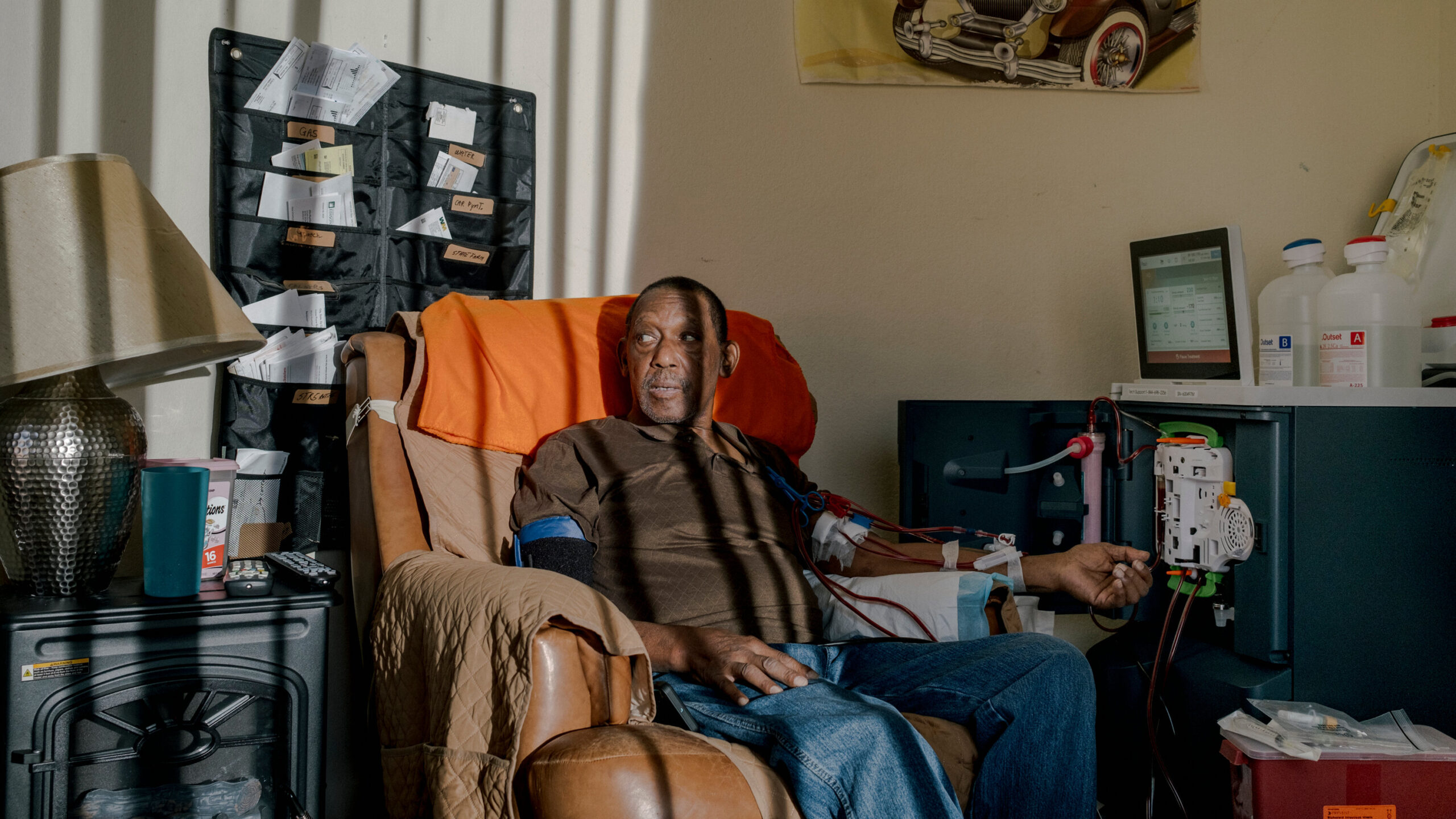Paul Hall was allowing about his pool. In his mind, he was far from the noncommittal clinic in Orange,Calif., where he was sitting still, his blood traveling through a hemodialysis machine, clearing it of poisons. Soon, he’d be watching his three grandchildren splash around while doing his treatment. Or watching television. And he’d do it all at any hour he pleased.
There’s no place like home, ”Mr. Hall, 64, said.
He’d just a many further sessions left to be trained on using the Tablo Hemodialysis System, a home dialysis product made by Outset Medical, grounded in San Jose. When he was done, he hoped to plug it in at his home in Moreno Valley.
The size of a council- dorm refrigerator, the hemodialysis machines of this generation look nothing like the hulking bonesfirst introduced to the home request in the 1960s. A touch- screen, which uses 3- D vitality to walk druggies through each step, is mounted atop a box with a erected- in water sanctification system.After a 30- nanosecond setup process, which included fitting two 14- hand needles into his left arm, the machine confided him, “ Good job, Paul! ”
Like utmost of the,000 Americans with the end- stage renal complaint,Mr. Hall needs dialysis, or a transplant, to live. The number of people with habitual order complaint in this country is anticipated only to grow. It formerly affects about one in seven grown-ups, according to the 2022 periodic report of the United States Renal Data System.
A transplant would n’t beMr. Hall’s first; the bonefrom his oldest child about two decades agoneis failing. Without working feathers, redundant fluid and poisonous waste can make up and poison the body. Each time, about one in six cases bearing conservation dialysis dies, according to theU.S.R.D.S. Others abstain the treatment, most probably because of other life- limiting conditions, similar as advanced cancer or heart failure.
Case issues are surely better, but are still unacceptably poor, ” saidDr. Joseph Vassalotti, principal medical officer of the public order Foundation.The company that would come Outset Medical started in 2010; it launched commercially in 2018, when Tablo entered hospitals and conventions. The Food and Drug Administration cleared Tablo for home use in March 2020, just as vulnerable populations demanded to insulate because of the coronavirus epidemic. latterly that time, the company went public in a virtualI.P.O.
The only current volition for home hemodialysis systems is the movable NxStage System One, made by Fresenius Medical Care, which has headquarters in Germany. It was introduced to homes in 2005, with a newer interpretation, VersiHD, following more lately.
Of the hemodialysis units examined in a request analysis, Tablo is the most precious hemodialysis unit on the request, according to a check by ECRI, a federally pukka nonprofit patient safety association. Tablo costs an average price of$,000, banning service or functional costs, compared with$,000 for the NxStage System One..
Dialysis is indeed expensive. The Centers for Medicare & Medicaid Services is hoping to reduce its expenditures and ameliorate quality of care for its heirs with end- stage order complaint. Through fiscal impulses to dialysis providers, croakershealth systems and order transplant programs, the agency is seeking to increase home dialysis, as well as order donation.
The clear need for home systems is another factor. A maturity of dialysis cases travel to conventions for hemodialysis, with little inflexibility for long distances, snowstorms or auto trouble. Cases frequently rate themselves as having a low quality of life, as cramps, wakefulness, depression and anxiety are all common.
Mr. Hall has missed so numerous life events, he said. And while he does n’t complain, when conventions close for long vacation weekends, he notices a difference.I can tell how I feel after two days, ”Mr. Hallsaid.However, I want to get that off of me, “ If it’s starting to get harder to breathe and I know there’s fluid on my lungs. ”
Home dialysis isn’t a new idea, said Leslie Trigg, Outset Medical’s principal superintendent. In the early 1970s, over 30 percent of dialysis cases were estimated to have done their treatment at home. frequently, they had little choice, with dialysis units unfit to meet the demand, according to a 2017 review in the journal Seminars in Dialysis.No longer exchanging to the clinic, he’s happy for the choices each day holds — simple bonlike, early morning treatment, or evening? “ That’s a great feeling of knowing I can work around whatever comes up, ” he said.

